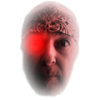-
Posts
502 -
Joined
-
Last visited
Posts posted by uncle808us
-
-
-
-
-
I have no Affinity folders in iCloud Drive.. at all.
-
I've changed this file and moved on. Sorry did not think I'd get an answer.
-
Then we'd have a piece of software that works for artists. Instead of web designers.
-
Any Ideas? I'd like to export a svg and have it work.
-
-
Thanks not surprising. Good work around.
-
Where can you find the .pngs for the brushes in Affinity D or P? I want to load the same brush from Affinity to a 3D paint program .
-
I am fed up with Affinity. Both Designer and Photo.
Reasons :
unexpected crashes.
no good seamless button.
lousy hard to see grid.
designed for web publishers not artists.
I find myself having to return to Gimp (which was free ) for many things which Affinity is incapable of doing.
Today spent a lot of time trying the Affine technique for a seamless map still ended up with a thin white line during a resize in my 3d app.
Went to Gimp pressed Map>Seamless line gone, I wish Affinity was gone from my computers, but I wish my money was not gone.
I will go try to get a refund from Apple but they are so poor they can't refund any money.
Rant over! Goodby Affinity.
I need to work not fight with my graphics apps.
-
Well I see we are still stuck with the barely visible no way to change crappy grid! Boo!!!
-
Sometimes I want to erase a white background so I use filter/color/erase white paper but sometimes the makes certain parts of the image transparent (white stuff grey stuff etc) how can I repair these sections? Thanks
Hope this question is clear enough .
-
Thank you both the system colors work for me just fine.
-
Can we assume that by now you have seen the reply posted in the Cheetah forums (explaining that HSL & HSV are not the same thing)?
Yes Thanks
-
-
-
-
I do this all the time with Cheetah 3D. Cheetah saves the UV map as a pdf which imports into Photo or Design with transparent back ground. Also Cheetah has a right click on the image in the material that will open the texture map in Design or Photo which ever you choose as your open in app in the Finder (get info) open all files with this app. Works great. Have fun also check out:
- G.M.1986 and Chris Heath
-
 2
2
-
Hi uncle808us,
Take a look at this thread :)
I should have searched sorry. You may remove this post. again sorry. was jus in a rush this morning when I posted.
-
".afdesign and .afphoto are the same format - just with different names - and they will both support 32-bit HDR completely" from Andy.
And:
"As well as being able to keep the .afphoto file, we are also adding import / export support for OpenEXR and JPEG-XR - both of which can store 32bit unbounded."from Andy as well.
Group
Moderators: Andy SomerfieldSounds great! -
OpenEXR Overview[edit]
A full technical introduction of the format is available on the OpenEXR.org website.OpenEXR, or EXR for short, is a deep raster format developed by ILM and broadly used in the computer-graphics industry, both visual effects and animation.OpenEXR's multi-resolution and arbitrary channel format makes it appealing for compositing, as it alleviates several painful elements of the process. Since it can store arbitrary channels—specular, diffuse, alpha, RGB, normals, and various other types—in one file, it takes away the need to store this information in separate files. The multi-channel concept also reduces the necessity to "bake" in the aforementioned data to the final image. If a compositer is not happy with the current level of specularity, he or she can adjust that specific channel.Please. -
-
Anything like this for designer? I need to sharpen a pixel layer in Designer, when I try to edit in Photo I usually get "Designer Quit" notice, PITA!









Can you edit layer masks like a normal layer?
in [ARCHIVE] Photo beta on macOS threads
Posted
Could someone please explain a bit more about curves adjustments or direct me to a tutorial.